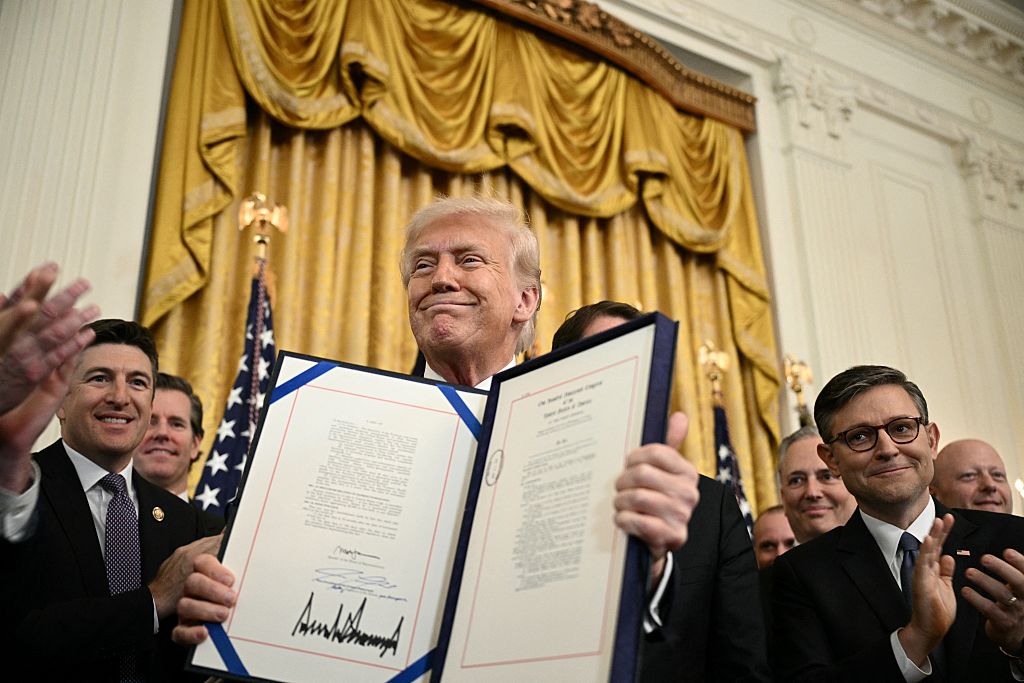Why Wise could be worth a lot more than its share price implies
Foreign-exchange transfer service Wise has the potential to become the Amazon of its sector, says Jamie Ward

Twenty years ago, if you had asked the average professional investor, their description of Amazon would have been something like “it sells books online and it doesn’t make any money”. Had they been particularly sniffy about the business, they might have dismissed it as a “virtual Waterstones”.
Yet today it is one of the largest firms in the world. It has revolutionised how we think about business-to-consumer (B2C) commerce and entrepreneurialism. Over those 20 years, its value has surpassed $1 trillion in value and given investors a one hundred-fold return.
For investors to benefit from future Amazon-like opportunities requires vision and long-term thinking. In the UK, Wise (LSE: WISE) has many of the characteristics of Amazon 20 years ago, including investors who dismiss it as “just a currency transfer business”. The following will explain why Wise is unlike anything else listed in the UK and has the potential to be a hugely profitable investment for those with the patience to see it through. It could become the first British company to be worth more than $1 trillion.
MoneyWeek
Subscribe to MoneyWeek today and get your first six magazine issues absolutely FREE

Sign up to Money Morning
Don't miss the latest investment and personal finances news, market analysis, plus money-saving tips with our free twice-daily newsletter
Don't miss the latest investment and personal finances news, market analysis, plus money-saving tips with our free twice-daily newsletter
The story of Wise: a simple idea born out of frustration
The story of Wise began in the late 2000s at a time when the financial world was in the grips of its worst crisis in 80 years. Two Estonian expats living in London met at a party and bonded over their shared heritage. Kristo Käärmann was working as a management consultant and Taavet Hinrikus had been the first employee at Skype.
Eventually, the chat moved to a bugbear for them both – transferring money from euros and pound sterling or vice-versa. The pair had opposite problems. One was earning in euros but had expenses in pounds, whereas the other earned in pounds but had large euro expenses thanks to an Estonian mortgage.
The problem was that when money was transferred from one currency to the other, they incurred expenses that were opaque, variable and very expensive. Furthermore, depending on the day of the week and the time of the day, money might take five days to arrive in one account after leaving the other. As a smart pair of young, tech-savvy chaps, they concocted an idea to circumvent the process of using traditional transfer markets via the banking system.
The solution was to not change one currency for another. Rather, the one who earned in euros would deposit money into the other one’s euro account and vice-versa. This was done via an agreed market rate for currency transfers done via a Skype account. Since transferring money from one account to another in the same currency was a simpler process, it was almost free rather than expensive and it was considerably quicker.
Over time, the pair saved each other thousands of pounds by avoiding the usual route to move money from one currency to another. After a few years, they realised that they could provide this service to other people in similar situations, such as expats with expenses in currencies other than the one in which they earn. At the time, they thought there were 200 million people worldwide who lived like this. In January 2011, TransferWise was founded to address this market.
Wise vs Swift: how it works
The traditional way currency transfers are completed began in 1973 after a cooperative was founded in Belgium called the Society for Worldwide Interbank Financial Telecommunication (Swift). It is owned jointly by global banks and provides a messaging network for international payments.
In 1973, it was technologically advanced and allowed a process that prior to its foundation was much more onerous and costly, but Swift itself is now outdated. It works as follows:
- A customer instructs their bank that they would like to send currency in one currency to a different currency at a different bank. The bank charges a transfer fee, which is variable but can be relatively high, especially on small amounts of money.
- A second, intermediary bank sends the money through the Swift network, which incurs an additional fee.
- The exchange rate is calculated and marked up for a profit.
- The recipient bank deposits the money in a different currency in a bank account. It then charges a recipient fee.
It is cheaper than it used to be, but this whole process can add fees of more than 6% so that in effect the recipient receives 6% less money than the sender sends. Additionally, banking is not a 24/7 operation – each bank along the way has different times when it transacts currency movements. The effect is that it regularly takes several days for money to appear in the recipient’s account.
Simplistically, Wise’s model is to have pools of money in different currencies and locations. Customers instruct Wise to deduct some money in one currency locally and add it to an account in a different country with a different currency. Just because it seems simple, it isn’t easy. Underpinning this system is a technology supported by almost 1,500 development staff. Moreover, to operate in this way has required hundreds of licences across the world. This is all so that a customer receives the same service whether they are transferring sterling into US dollars or Brazilian reals into Indian rupees.
Wise’s system removes Swift from the procedure entirely and with it, considerable time and expense. In 2024, the average cost for a customer to send money through Wise was 0.59%, meaning, for example, a fee of 59p to transfer £100. For a customer transferring through a bank, it would cost around £6. Wise also reports that 60% of transfers are completed immediately (in less than 20 seconds), more than 80% are within an hour and 95% within 24 hours. Just 5% of transactions take longer than a day. Banks take between three and five days.
How does Wise make money?
One way Wise makes money is that it charges a small fee for transferring a sum (pricing starts at 0.33%). However, this has been steadily reduced throughout the history of the company. The CEO and co-founder, Kristo, has stated that he wants currency transfers to be free. One might therefore ask if the company is giving away its service for free, how does it make any money and, more importantly, why bother investing?
Customers with Wise accounts have money deposited with the company. This money earns income for Wise. More money transferred through the company increases the amount of customers’ money held on deposit, which means more profit for Wise. As with fees for transferring money, Wise plans to give as much back to customers as possible, but it can retain enough income from this source to add meaningfully to its profitability. So the bigger Wise becomes the more it earns on customers’ deposits. In turn, it can lower the cost of transferring money between currencies. This is already 90% cheaper than traditional banks, and Wise intends to make this figure 100%.
Jeff Bezos liked to say of other companies “your margin is my opportunity”. What he meant by that was companies that were making money doing traditional activities (like selling books in large, expensively maintained bookshops) could not compete with Amazon. Amazon is built to be the most efficient way of selling to customers imaginable. It reached its position by continually cutting the price of its services to customers, which entrenched its competitive advantage to the point of being insurmountable. There are loud echoes of this strategy in the way Wise operates where it, too, is entrenching its position so thoroughly that it is becoming impossible for incumbents to compete.
Is Wise a valuable investment?
For its first ten years, the company was called TransferWise because it was Wise to use its services to Transfer money. In February 2021, the company dropped “Transfer” and became Wise. The implication is clear. Wise has the opportunity to disrupt far more than just the currency transfer market.
In the past few years, the company has added more services, such as debit cards, to its offering, so that money in a Wise account can be spent as if it were in a bank account. Just as Amazon used book sales as a springboard to disrupt consumers’ commerce, currency transfer is a springboard to much more for Wise.
Yet before the company expands into new areas, there is still massive opportunity in currency transfer. Last year, the company transacted roughly £120 billion for individuals and small businesses, while more than £11 trillion was turned over globally, thus giving the company ample growth opportunity. Wise has three divisions. Two are exciting for investors given the growth possibility, but the third could be a game-changer. The company’s largest division, Personal, serves individuals. The second division, Business, serves small business accounts like small retailers. It was launched a little later but is rapidly growing into a very large market.
Before the third division is explained, consider the following analogy of what Wise has achieved. When it comes to currency transfers, banks are like train companies. They charge you £250 to go from Manchester to London and it takes two hours (if you are lucky). Wise has invented a teleportation device whereby you arrive in London as soon as you set foot in Manchester Piccadilly train station. Moreover, it only charges you £25 for the pleasure and, to top it off, is promising that in future it will be free. How can traditional train companies (banks) compete?
Wise’s Platform represents the third part of the business. Here companies that transact very large amounts of currency can piggyback onto Wise’s infrastructure. Via a process known as white-labelling, companies that offer currency transfers to customers can transact through the Wise infrastructure but the client interface appears to be their own.
In the UK, for example, customers who transfer currency through a Monzo bank account actually do so through Wise. Wise now has 90 banks globally conducting customers’ requests for currency transfers through the Wise platform. Most notably, Standard Chartered, a major multinational bank headquartered and listed in London, recently joined the Wise platform.
The answer to the question above about how a traditional bank can compete with Wise is that they can’t. Instead, banks are increasingly circumventing the outdated Swift system and operating on Wise’s infrastructure. Back to the analogy – train companies have stopped using traditional rail tracks and are now using the teleportation device for their trains.
Wise certainly has the qualities of a business that could become very special and valuable indeed. It is growing rapidly, is already very profitable and most importantly has a visionary CEO. Rather than focusing on how much money Wise is making in 2024, which is largely irrelevant in the long run, consider that Wise is building an entirely new infrastructure for a significant part of global finance. It is hard to gauge what that is worth, but the best guess is that it’s worth a lot more than today’s share price implies. It would be very optimistic to say that Wise could be the first UK $1 trillion company but it is a realistic possibility.
This article was first published in MoneyWeek's magazine. Enjoy exclusive early access to news, opinion and analysis from our team of financial experts with a MoneyWeek subscription.
Get the latest financial news, insights and expert analysis from our award-winning MoneyWeek team, to help you understand what really matters when it comes to your finances.
Jamie is an analyst and former fund manager. He writes about companies for MoneyWeek and consults on investments to professional investors.
-
 5 investment trusts for your pension
5 investment trusts for your pensionInvestment trusts are often a good choice for long term growth and income options, but which ones should you consider for your pension?
-
 Inheritance tax climbdown as agricultural property relief threshold raised
Inheritance tax climbdown as agricultural property relief threshold raisedReforms to agricultural property relief had sparked strong opposition, and the government has now diluted its controversial inheritance tax plans for farmers
-
 Stock markets have a mountain to climb: opt for resilience, growth and value
Stock markets have a mountain to climb: opt for resilience, growth and valueOpinion Julian Wheeler, partner and US equity specialist, Shard Capital, highlights three US stocks where he would put his money
-
 The steady rise of stablecoins
The steady rise of stablecoinsInnovations in cryptocurrency have created stablecoins, a new form of money. Trump is an enthusiastic supporter, but its benefits are not yet clear
-
 SRT Marine Systems: A leader in marine technology
SRT Marine Systems: A leader in marine technologySRT Marine Systems is thriving and has a bulging order book, says Dr Michael Tubbs
-
 Goodwin: A superlative British manufacturer to buy now
Goodwin: A superlative British manufacturer to buy nowVeteran engineering group Goodwin has created a new profit engine. But following its tremendous run, can investors still afford the shares?
-
 A change in leadership: Is US stock market exceptionalism over?
A change in leadership: Is US stock market exceptionalism over?US stocks trailed the rest of the world in 2025. Is this a sign that a long-overdue shift is underway?
-
 A reckoning is coming for unnecessary investment trusts
A reckoning is coming for unnecessary investment trustsInvestment trusts that don’t use their structural advantages will find it increasingly hard to survive, says Rupert Hargreaves
-
 Metals and AI power emerging markets
Metals and AI power emerging marketsThis year’s big emerging market winners have tended to offer exposure to one of 2025’s two winning trends – AI-focused tech and the global metals rally
-
 8 of the best houses for sale with beautiful fireplaces
8 of the best houses for sale with beautiful fireplacesThe best houses for sale with beautiful fireplaces – from a 15th-century cottage in Kent to a 17th-century palazzo in Oxfordshire